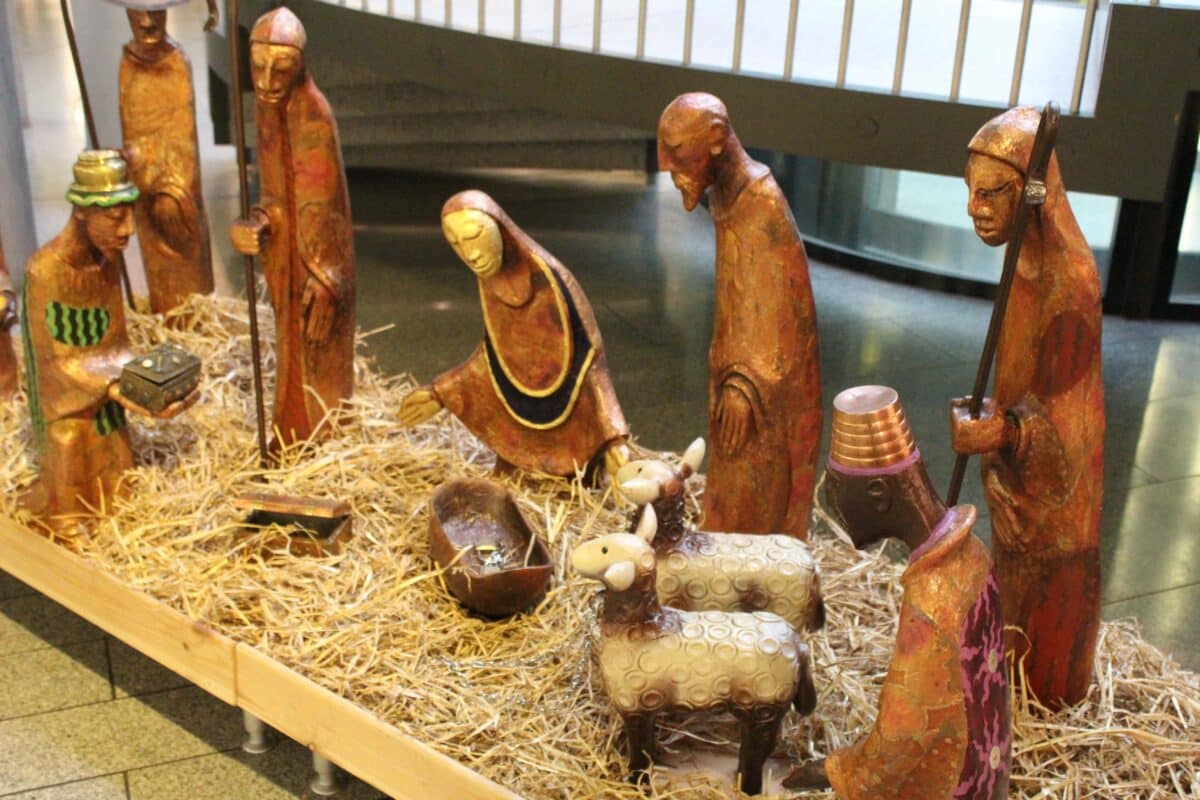One of the books I’ve read this year that has really affected me is A Nazareth Manifesto by Samuel Wells. It’s one of those books that is so rich that it’s hard to read in significant chunks, as there is always so much to go away and think about and develop your thinking around. A chapter is often far too much to try to read at once; you end up with a particular story or insight that grabs your attention. I’ve spoken before about his reworking of the story of the Good Samaritan that he drops back into its original context to suggest that perhaps Jesus is saying we need to be rescued, rather than we should rescue others. As it’s Christmas time, the section that can’t help but grab your attention is his suggestion that we focus too much of Jesus’ death and not enough on his life.
He says that because the Easter narrative of Christ’s saving death is so significant we lose the power of God so wanting to be with his creation that he came to live with us. For him, God choosing to be with people is the most important thing. Everything, Easter included can be understood through that lens. In fact, he would go as far as to say that if man had not fallen and sin did not need to be dealt with Jesus would still have come as the desire to be with people is so strong.
This is a really important place for me to start when I’m thinking about talking with the kids in my groups about Christmas, because we all know that one of them is going to hit me with the ‘why’ question. Why did Jesus come to earth? Why was he born as a baby? What is going on here? These are the questions we get asked every year and too often we try to get really neat and basically say the meaning of Christmas is Easter, Jesus was born so he could die for us. In fact, I’ve seen Christmas talks where a cross is unwrapped in a parcel. This is such a reduction of the wonder of what’s called ‘incarnation’ and is what Sam Wells is pushing against. Jesus came to Earth as a baby to be part of a family that was about to become refugees, to be cared for and to be loved, as well as to care and love, not just to mark time for Easter. If that had been the case, he may as well just ‘beamed down’ as an adult ready to go.
There is a real risk that without this depth, we can give children and young people the idea that Jesus wandered around the Earth healing everyone and solving everyone’s problems. Then he solved our biggest problem (sin) at Easter and he can do the same for you. Except that life isn’t like that; we struggle, sometimes life is tough and we’ve surely all known what it is to pray and see no change and hear nothing back. Here is where incarnation has its power, this is where we see Jesus spend thirty years with (as far as we know) no miracles, walking alongside people in their struggles and in his own struggles too. This is such an important thing for children and young people to hear and to know, no matter how hard life can feel Jesus is walking alongside you, being with you. That is the gift of Christmas, it’s too small to simply wrap an Easter egg up in festive wrapping paper and make that the meaning of Christmas.
This Christmas, when I’m asked why Jesus came, my neat answer is to be with us, in all the mess.
